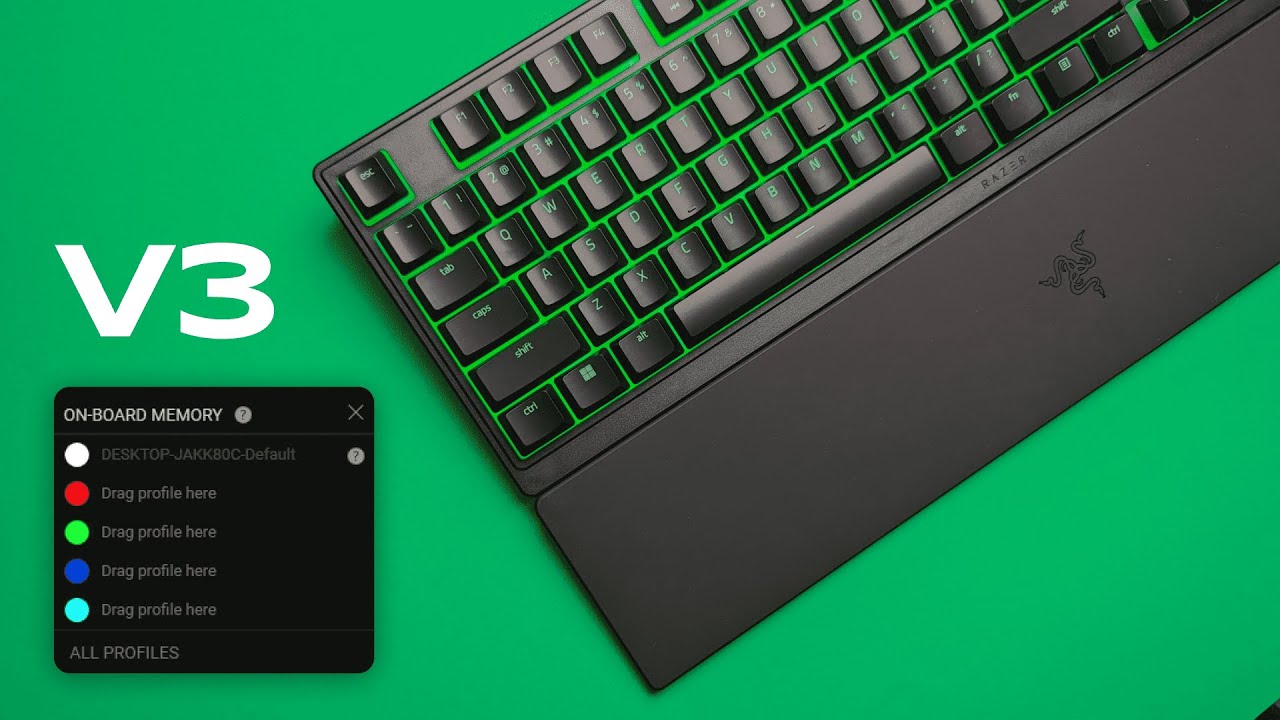Razer Ornata V3 Keyboard - Synapse Software Review

I'm Kova Tech, and in this guide I'll walk you through how Razer Synapse works with the Ornata V3 — from profiles and key remapping to lighting, Hypershift, and useful shortcuts. If you want to squeeze more productivity or complex keybinds out of your keyboard, this walkthrough will show exactly where to look and how to set things up.
Quick overview: installing Synapse and the main dashboard
Razer Synapse is Windows-only. Once installed, the first screen you see is the Ornata V3 dashboard. This is where you manage profiles, remap keys, toggle lighting presets, and access advanced features.
Profiles: create, rename, export
Profiles let you store multiple key layouts and lighting setups for different games or workflows. You can:
- Add a new profile
- Rename profiles for clarity
- Reset, duplicate, or export profiles to share or back up settings
Key remapping: click a key and customize
Click any key in the on-screen keyboard to remap it. While you probably won't remap standard letters often, modifier keys and function keys are prime candidates.
Remap options at a glance
- Default — keep standard behavior
- Key recording — record a sequence (example: Shift + W)
- Turbo mode — auto-repeat a key a set number of times
- Alphabet & numbers — assign letters or digits
- Modifiers — assign Shift, Ctrl, Alt, plus turbo if needed
- Function keys — F1–F24 mappings
- Numpad & navigation — arrows, Esc, Tab, etc.
- Symbols — punctuation and special characters
Example: I recorded a Shift + W macro and saved it — now a single key press can trigger that combination. Hovering over the remapped key shows what it will do.
Mouse functions and inter-device macros
The next tab contains typical mouse actions: left, right, middle click, and more. There's also an Inter-device feature: if you own multiple Razer devices (keyboard + mouse), you can create shortcuts that combine inputs from both devices as one cohesive action.
Switch profile & switch lighting
Set keys to switch profiles (next, previous, cycle, or a specific profile). This is invaluable if you have game-specific layouts or different productivity setups—Synapse can even change profile automatically based on which app is active.
Switch lighting lets you swap lighting presets on the fly, but for deeper lighting control you'll want Chroma Studio (covered below).
Hypershift: a whole second keyboard layer
Hypershift turns your keyboard into a second layout. Hold a Hypershift key and most keys map to new actions — perfect for MMO players or heavy macro users who need dozens of binds without buying another keyboard.
For casual users this can be overkill, but for anyone who needs many shortcuts it's a powerful feature.
Launch programs, websites, and other actions
Synapse isn't limited to key combos. You can assign keys to:
- Launch a program (calculator, editor, game)
- Open a website by pasting the URL
- Multimedia controls — play/pause, volume up/down
- Brightness controls for displays
- Window shortcuts — quick access to Calculator, Notepad, Copy/Paste, Refresh, Email, etc.
Text functions, emoji and character map
Want to paste frequently used phrases or code? Use the Text function to store snippets and paste them with a key. There are also options to open an emoji menu or the character map for special symbols.
Disable keys and gaming mode
You can also disable any key entirely. Under global settings you'll find Hypershift toggle and Gaming Mode (always on) which suppresses Windows key behavior so your game doesn't get interrupted. You can also block Alt+Tab and Alt+F4 while gaming to prevent accidental switches.
Lighting: brightness, presets, and Chroma Studio
The Lighting tab lets you set brightness and choose built-in effects. Dragging the brightness slider instantly updates the keyboard, and you can also change brightness with Fn + F11 (down) and Fn + F12 (up).
Built-in effects include:
- Static — single color
- Audio metering — reacts to music or speech
- Breathing and other animated presets
For advanced per-key effects, layer animations, and external integrations (Alexa, etc.), install Chroma Studio. Chroma Studio opens up custom scripting and multi-device synchronized effects.
Idle & power-aware lighting
Set the lights to turn off when your display sleeps or after a period of inactivity (for example, 15 minutes idle). This helps save power and keeps your desk from being an RGB billboard when you're away.
Practical tips and workflows
- Use profiles per game or application so Synapse can auto-switch when you change tasks.
- Reserve Hypershift for heavy macro sets (MMO hotbars, editing shortcuts).
- Use the Text function for commonly typed blocks (email signatures, code snippets).
- Link keyboard and mouse actions via Inter-device when you want single-key combos that include mouse clicks.
- Install Chroma Studio only if you need advanced lighting — otherwise built-in presets are quick and polished.
Conclusion
The Razer Ornata V3 paired with Synapse gives you flexible remapping, an extra Hypershift layer, easy profile switching, and robust lighting options. Whether you're optimizing a gaming layout or building productivity shortcuts, Synapse makes it straightforward to create and manage those setups. If you like deep per-key lighting or voice integrations, add Chroma Studio to the mix.
If you want a full hardware-focused review of the Ornata V3, check out my dedicated review video for the hands-on impressions and build details.
Thanks for reading — I’ll catch you in the next guide.